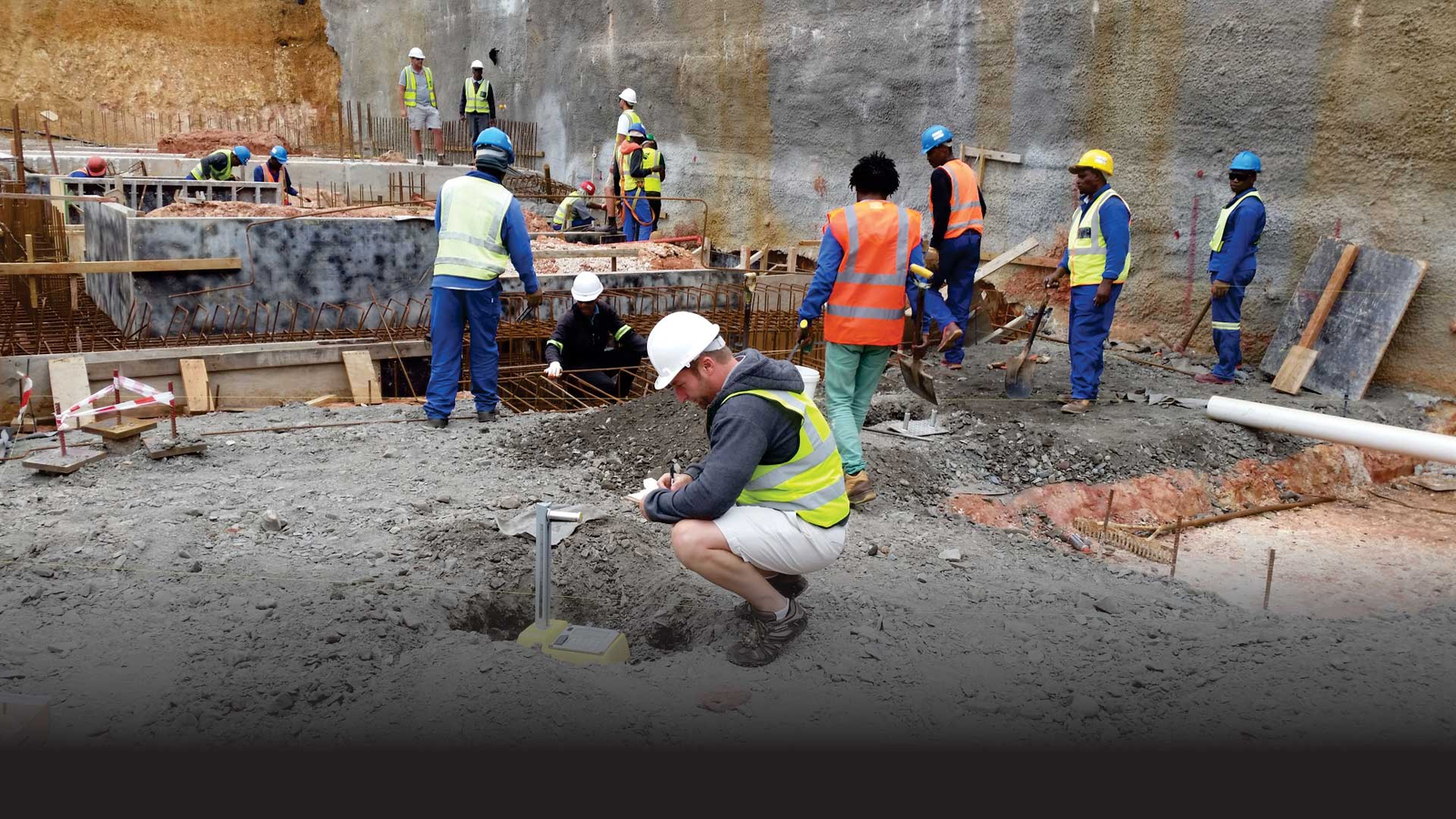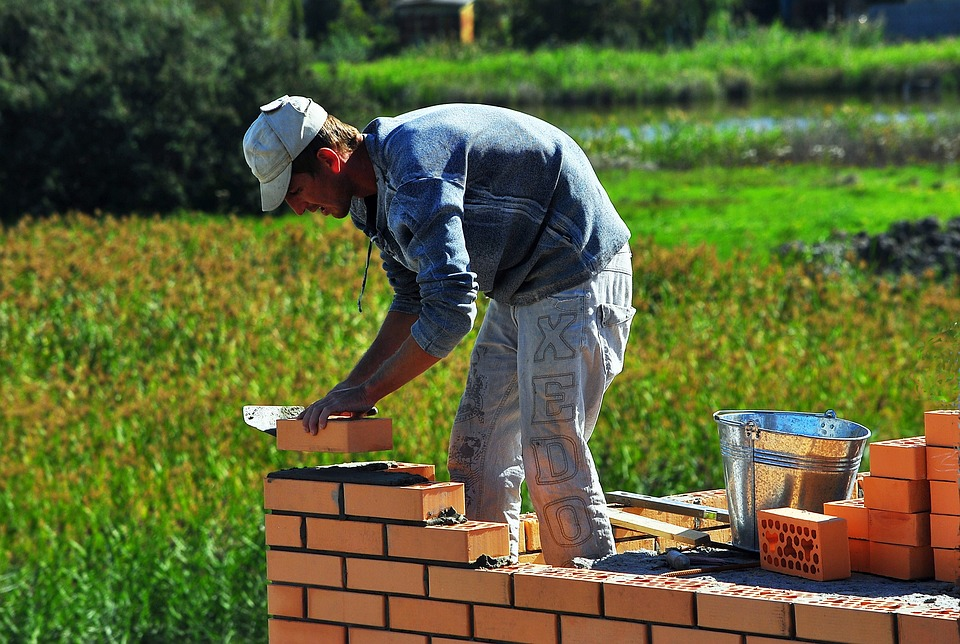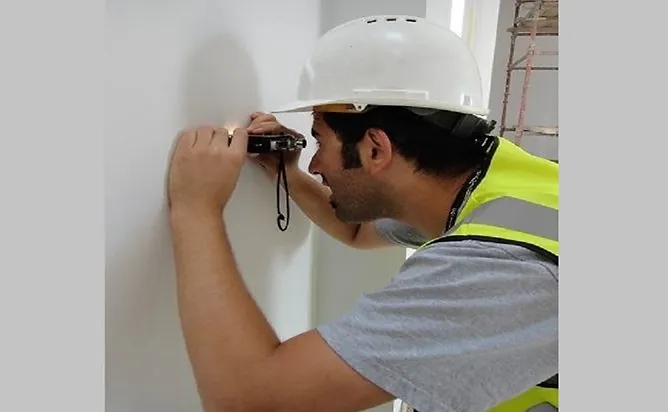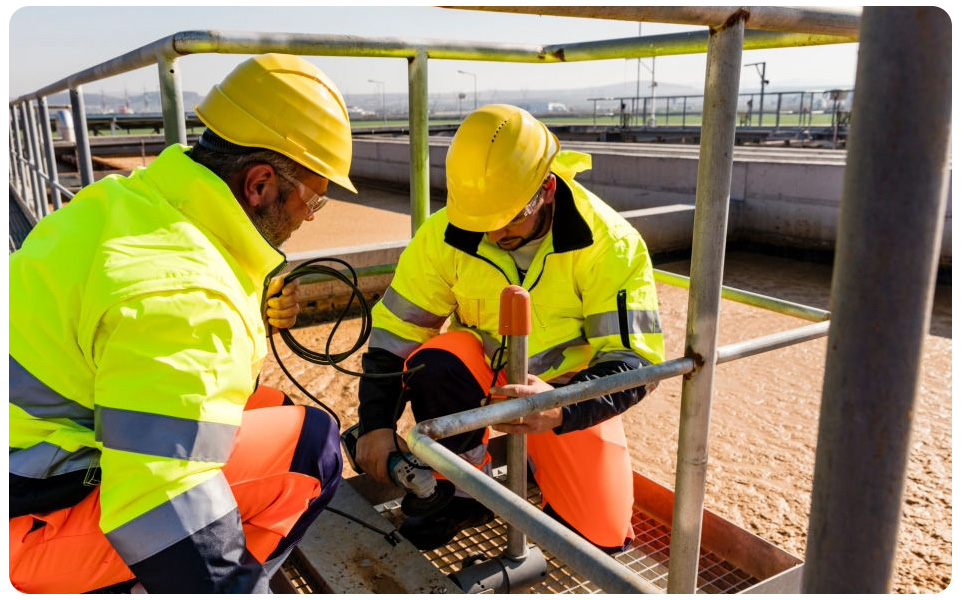Construction Laboratory & Field Technician ( 6 month course)
Construction Laboratory & Field Technician click here
Brief Job Description
Construction Laboratory & Field Technician is responsible for sampling, preparation of test specimen and
testing of construction materials including cement, sand, aggregate, bitumen, concrete, brick, and
concrete blocks as per standard test procedures.
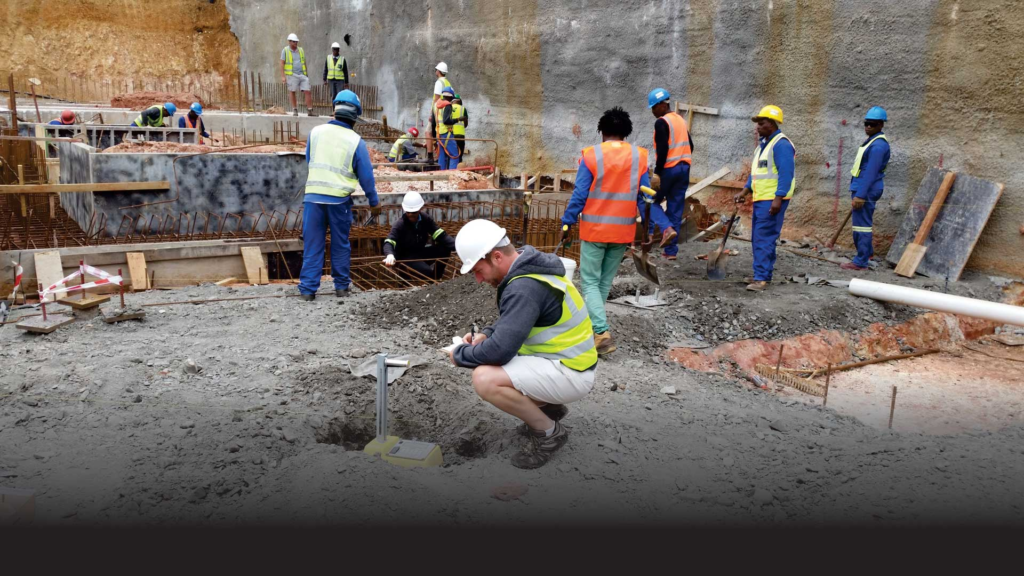
Personal Attributes
The construction laboratory and field technician is expected to be physically fit to work across various
locations with varied environmental conditions. The person should be organized, diligent, methodical,
safety-conscious, and a prompt decision-maker. In addition to being a team player, the individual should
have good communication skills.
Operate and maintain test instruments and equipment for construction material testing
Description
This unit describes the skills and knowledge required to select, operate and maintain test instruments &
equipment for construction material testing.
Scope
The scope covers the following :
Check the functioning of instruments prior to testing and maintain them
Use test instruments, apparatus, and equipment for cement, concrete, and brick samples testing.
Use test instruments, apparatus, and equipment for aggregate testing
Use test instruments, apparatus, and equipment for soil and bitumen testing
Elements and Performance Criteria
Check the functioning of instruments prior to testing and maintain them
To be competent, the user/individual on the job must be able to:
PC1. check the working condition of instruments and accessories prior to testing
PC2. clean and lubricate the instruments as per applicability
PC3. check the calibration of instruments prior to testing as per applicability
PC4. upkeep all relevant tools, instruments, apparatus and equipment
Use test instruments, apparatus, and equipment for cement, concrete, and brick samples testing
To be competent, the user/individual on the job must be able to:
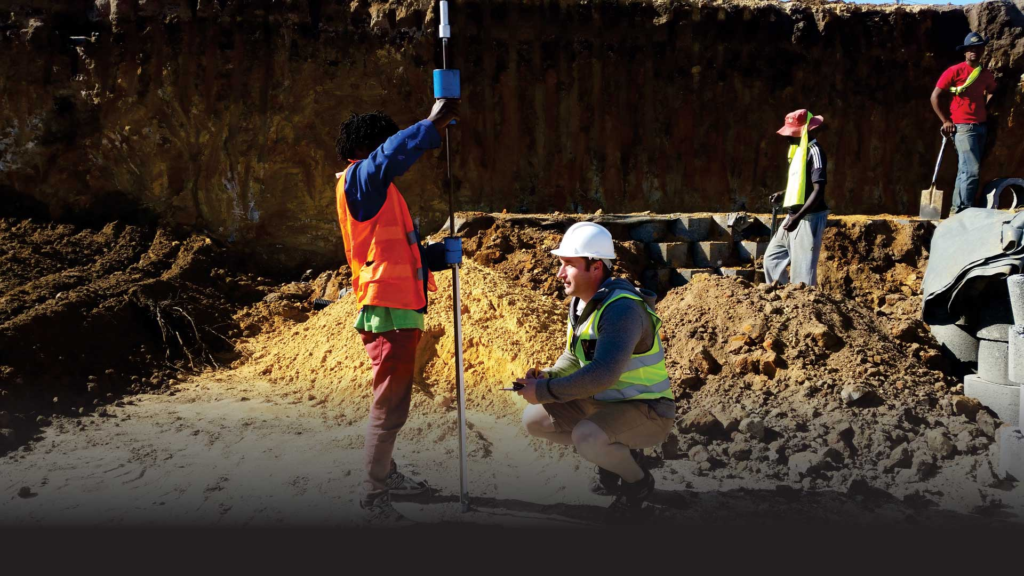
PC5. use IS sieves, Vicar apparatus, Le-chalkier apparatus, Le-Chalkier flask and cube molds
for cement testing as per standard operating procedure
PC6. use concrete cube molds/ cylindrical molds, slump cone apparatus, compacting factor test
apparatus, flow table test apparatus, Vie bee test apparatus for concrete test as per
standard operating procedure
PC7. operate compressing testing machine as per standard operating procedure for cement,
concrete cubes and brick samples
PC8. monitor and record temperature of curing tank in standard Performa
PC9. use weighing balance and heating oven for cement, concrete, brick testing as per
applicability
Use test instruments, apparatus, and equipment for aggregate testing
To be competent, the user/individual on the job must be able to:
PC10. use pycnometer, cylindrical metal container, oven, weighing balance for testing of fine
aggregate as per standard operating procedure
PC11. use IS sieve, flakiness gauge, elongation gauge, crushing value apparatus, impact value
apparatus, abrasion value apparatus for testing of coarse aggregate as per standard
operating procedure
PC12. operate compression testing machine to determine crushing value of coarse aggregate as
per standard operating procedure
Use test instruments, apparatus, and equipment for soil and bitumen testing
To be competent, the user/individual on the job must be able to:
PC13. use IS sieves, compaction test apparatus, rapid moisture content meter apparatus,
Casagrande’s device, mechanical sieve shaker, heating oven, core cutting test apparatus for
field testing of soil as per standard operating procedure
PC14. use centrifuge extractor, thermometer, specific gravity bottle, penetrometer, bitumen
compactor, flash and fire point test apparatus, Marshall stability test apparatus for testing of
bitumen as per standard operating procedure

Knowledge and Understanding (KU)
The individual on the job needs to know and understand:
KU1. standard procedure for testing of the material sample in laboratory and field relevant to
quality assurance and quality control works in construction
KU2. safety rules and regulation for handling and storing of construction laboratory and field
testing tools, equipment and materials
KU3. importance of personal protection including the use of related safety gears & equipment in
accordance with organizational norms
KU4. service request procedures for tools, materials and equipment as per organizational norms
KU5. how to identify different types of tools, instruments and equipment used for testing of
cement, concrete, bricks, aggregate, soil and bitumen
KU6. importance of periodical calibration of testing tools, apparatus, instruments and equipment
KU7. how to check working condition of testing instruments and equipment used for testing of
cement, concrete, bricks, aggregate, soil and bitumen
KU8. how to operate instruments and equipment as per manufacturer’s specification
KU9. upkeep, repair and maintenance of tools and equipment
KU10. how to operate compression testing machine for testing of cement, concrete, bricks and
aggregate
Generic Skills (GS)
User/individual on the job needs to know how to:
GS1. write in one or more language, preferably in the local language of the site
GS2. read sketches related to setting of instruments, operational manual of instruments, standard
test procedure related to testing of material and field testing, various signboards, safety
rules, safety tags, and instructions related to exit routes during an emergency at the
workplace
GS3. speak in one or more language, preferably one of the local language at site
GS4. communicate orally and effectively with team members
GS5. analyze the safety aspect of the workplace
GS6. plan work and organize required resource effectively
GS7. complete work as per agreed time schedule and quality parameters
GS8. resolve any conflict within the teammates
GS9. evaluate the complexity of the tasks
GS10. identify any violation of safety norms during the work
Carry out testing of cement, concrete, bricks and aggregates
Description
This unit describes the skills and knowledge required to carry out testing of cement, concrete, bricks and
aggregates
Scope
The scope covers the following :
Carry out testing of cement, concrete, brick and block sample
Carry out testing of aggregate sample
Elements and Performance Criteria
Carry out testing of cement, concrete, brick and block sample
To be competent, the user/individual on the job must be able to:
PC1. interpret the testing procedures for the construction materials such as cement, concrete,
bricks, blocks etc. from standard lab manuals and IS codes, prior to commencement of
testing
PC2. collect cement/ concrete/ bricks /blocks sample from the concerned lot of the construction
materials
PC3. perform standard test on the cement sample to determine consistency, initial and final
setting, fineness, soundness, specific gravity etc.
PC4. perform slump cone, compaction factor and Vee-bee test on fresh concrete as per standard
test procedure
PC5. cast the cement cube and concrete cube in fields and laboratory as per standard procedure
for compressive strength testing of cement and concrete
PC6. carry out test to determine compressive strength of cement cube and concrete cube as per
standard test procedure
PC7. perform test on the brick sample to determine water absorption, compressive strength,
efflorescence as per standard test procedure
PC8. perform test on the block sample to determine water absorption, density and compressive
strength as per standard test procedure
PC9. record readings relevant to cement/concrete/bricks/blocks tests in standard performa as per
applicability
PC10. store tested cement/concrete/bricks/blocks samples safely in laboratory for specified
duration
PC11. ensure tested cement/concrete/bricks/blocks sample are reused or safely disposed
Carry out testing of aggregate sample
To be competent, the user/individual on the job must be able to:
PC12. interpret the testing procedures for the aggregates from standard lab manuals and IS codes,
prior to commencement of testing
PC13. collect samples of fine and coarse aggregates from the concerned lot of materials and carry
out operations such as washing, weighing, measuring, sieving, tamping, oven drying etc.as
per standard test procedure and applicability
PC14. perform tests on fine aggregates to determine specific gravity, particle size distribution, silt
content and bulking as per standard test procedure
PC15. perform tests on coarse aggregate to determine specific gravity, bulk density, gradation,
flakiness index, elongation index, crushing value, impact value, and abrasion value as per
standard test procedure
PC16. record readings relevant to aggregate test in standard performa as per applicability
PC17. ensure tested aggregate sample are reused or safely disposed
PC18. store tested aggregate samples safely in laboratory for specified duration
Knowledge and Understanding (KU)
The individual on the job needs to know and understand:
KU1. standard procedure for testing of the material sample in laboratory and field relevant to
quality assurance and quality control works in construction
KU2. safety rules and regulation for handling and storing of construction laboratory and field
testing tools, equipment and materials
KU3. importance of personal protection including the use of related safety gears & equipment in
accordance with organizational norms
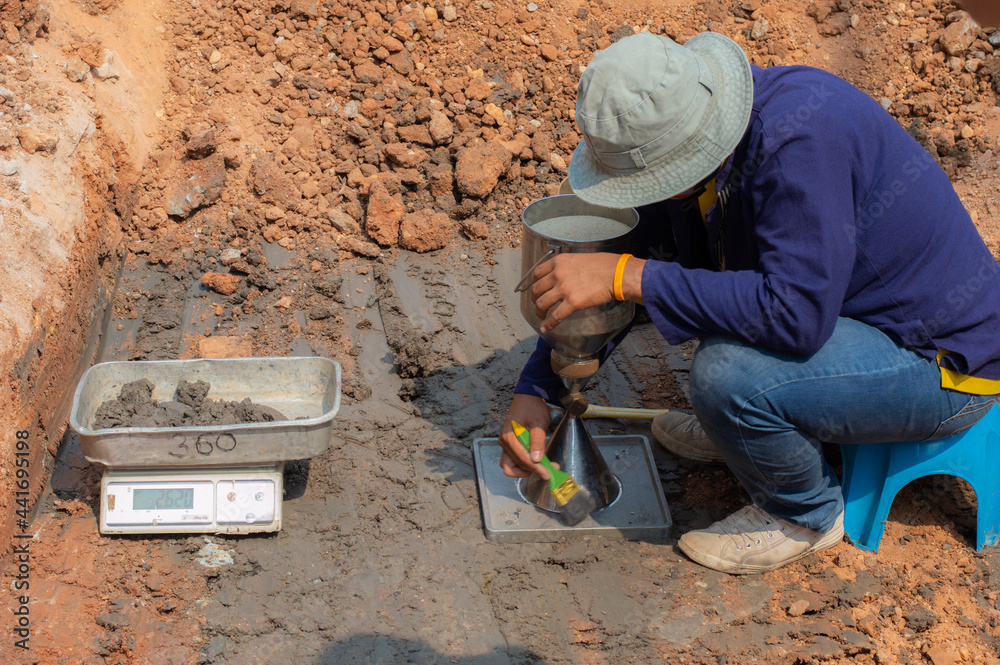
KU4. service request procedures for tools, materials and equipment as per organizational norms
KU5. how to provide tag/number/label to collected test sample from field or test sample in
laboratory
KU6. acceptance and rejection criteria of cement, concrete, brick, block and aggregate test
sample
KU7. visual/physical checking of cement, concrete, brick, aggregate in field
KU8. use of tools and equipment for testing of cement, concrete, brick, aggregate in field and in
site laboratory
KU9. standard procedure for preparing test specimen for various types of cement, concrete, brick,
aggregate test in laboratory and in field
KU10. standard test procedure for various types of cement, concrete, brick, aggregate test
KU11. safe operation of compression testing machine for testing of cement, concrete, brick and
aggregate
KU12. upkeep, repair and maintenance of tools and equipment relevant to cement, concrete, brick,
aggregate testing
KU13. importance of periodical calibration of testing tools, apparatus, instruments and equipment
KU14. how to read and record reading of gauges and meters along with the least count
KU15. disposal/reuse of tested sample in appropriate manner
KU16. how to protect instrument and equipment from dust and heat
KU17. IS codes relevant to cement, concrete, brick and aggregate testing
Generic Skills (GS)
User/individual on the job needs to know how to:
GS1. write in one or more language, preferably in the local language of the site
GS2. read sketches related to setting of instruments, operational manual of instruments, standard
test procedure related to testing of material and field testing, instructions provided for the
work, and various signboards, safety rules, safety tags, exit route information in one or more
languages, preferably in the local language of the site
GS3. speak in one or more language, preferably one of the local language at the site
GS4. communicate orally and effectively with team members
GS5. analyze the safety aspect of the workplace
GS6. plan work and organize required resource effectively
GS7. complete work as per agreed time schedule and quality parameters
GS8. resolve any conflict within the teammates
GS9. evaluate the complexity of the tasks
GS10. identify any violation of safety norms during the work
Carry out testing of soil and bitumen in field and site laboratory
Description
This unit describes the skills and knowledge required to carry out testing of soil and bitumen in field and
site laboratory
Scope
The scope covers the following :
Carry out testing of soil and bitumen sample in laboratory
Carry out field testing of soil and bitumen
Elements and Performance Criteria
Carry out testing of soil and bitumen sample in laboratory
To be competent, the user/individual on the job must be able to:
PC1. interpret standard test procedure for soil and bitumen prior to commencement of test
PC2. collect samples of soil and bitumen from the concerned lot of materials and carry out
operations such as washing, weighing, measuring, sieving, tamping, oven drying etc.as per
standard test procedure and applicability
PC3. perform tests for water content, Atterberg’s limit, particle size distribution, specific gravity,
compaction test and CBR test of soil as per standard test procedure
PC4. perform test on bitumen for content, specific gravity, ductility, penetration, softening point,
flash point, fire point and Marshall stability as per standard test procedure
PC5. record readings relevant to soil and bitumen test in standard Performa as per applicability
PC6. ensure tested soil and bitumen sample are reused or safely disposed as per requirement
PC7. store tested soil and bitumen samples safely in laboratory for specified duration as per
requirement
Carry out field testing of soil and bitumen
To be competent, the user/individual on the job must be able to:
PC8. prepare field testing tools and fix all associated accessories for performing tests
PC9. perform test to determine rapid moisture content in field as per standard test procedure
PC10. perform test to determine dry density of soil by sand replacement method and core cutting
method as per standard test procedure
PC11. carry out core cutting of bitumen from field to determine bitumen content as per standard
test procedure
PC12. ensure proper packing and shifting of soil and bitumen samples to laboratory for further
testing
PC13. observe and record readings relevant to soil and bitumen test in standard Performa as per
applicability
PC14. ensure tested field sample are reused or safely disposed as per requirement
PC15. store tested field samples safely in laboratory for specified duration as per requirement
Knowledge and Understanding (KU)
The individual on the job needs to know and understand:
KU1. standard procedure for testing of the material sample in laboratory and field relevant to
quality assurance and quality control works in construction
KU2. safety rules and regulation related to instruments handling and equipment operation for
testing of test material sample
KU3. importance of personal protection including the use of related safety gears & equipment in
accordance with organizational norms
KU4. service request procedures for tools, materials and equipment as per organizational norms
KU5. how to provide tag/number/label to collected test sample from field or laboratory
KU6. how to collect, sample and shift soil and bitumen sample from field
KU7. acceptance and rejection criteria of soil and bitumen test sample

KU8. storing and handling technique of soil and bitumen testing tools and equipment
KU9. visual/physical checking of soil and bitumen in field
KU10. use of tools and equipment for testing of soil and bitumen in field and in site laboratory
KU11. standard procedure for preparing test specimen for various types of soil and bitumen test in
laboratory and in field
KU12. the standard test procedure for various types of soil and bitumen test
KU13. how to handle hot bitumen during testing of bitumen
KU14. upkeep, repair and maintenance of tools and equipment relevant to soil and bitumen testing
KU15. importance of periodical calibration of testing tools, apparatus, instruments and equipment
KU16. how to read and record reading of gauges and meters along with the least count
KU17. disposal/reuse of tested sample in appropriate manner
KU18. how to protect instruments and equipment from dust and heat
KU19. IS codes relevant to to soil and bitumen testing
Generic Skills (GS)
User/individual on the job needs to know how to:
GS1. write in one or more language, preferably in the local language of the site
GS2. read sketches related to setting of instruments, operational manual of instruments, standard
test procedure related to testing of material and field testing, instructions provided for the
work, and various signboards, safety rules, safety tags, exit route information in one or more
languages, preferably in the local language of the site
GS3. speak in one or more language, preferably one of the local language at site
GS4. communicate orally and effectively with team members
GS5. analyze the safety aspect of the workplace
GS6. plan work and organize required resource effectively
GS7. complete work as per agreed time schedule and quality parameters
GS8. resolve any conflict within the teammates
GS9. evaluate the complexity of the tasks
GS10. identify any violation of safety norms during the work
Work effectively in a team to deliver desired results at the workplace
Description
This unit describes the skills and knowledge required to work effectively within a team to achieve the
desired results
Scope
The scope covers the following :
Interact and communicate in an effective manner
Support co-workers to execute the project requirements
Practice inclusion
Elements and Performance Criteria
Interact and communicate in an effective manner
To be competent, the user/individual on the job must be able to:
PC1. pass on work related information/ requirement clearly to the team members
PC2. inform co-workers and superiors about any kind of deviations from work
PC3. report any unresolved problem to the supervisor immediately
PC4. obtain instructions from superiors and respond on the same
PC5. communicate to team members/subordinates for appropriate work technique and method
PC6. seek clarification and advice as per the requirement
Support co-workers to execute the project requirements
To be competent, the user/individual on the job must be able to:
PC7. hand over the required material, tools, tackles, equipment and work fronts timely to
interfacing teams
PC8. work together with co-workers in a synchronized manner
Practice inclusion
To be competent, the user/individual on the job must be able to:
PC9. maintain cultural inclusivity at work place
PC10. maintain disability friendly work practices
PC11. follow gender neutral practices at workplace
PC12. address discriminatory and offensive behavior in a professional manner as per
organizational policy
Knowledge and Understanding (KU)
The individual on the job needs to know and understand:
KU1. own roles and responsibilities
KU2. importance of effective communication
KU3. the consequence of poor teamwork on project outcomes, timelines, safety at the
construction site, etc.
KU4. different modes of communication used at workplace
KU5. importance of creating healthy and cooperative work environment among the gangs of
workers
KU6. different activities within the work area where interaction with other workers is required
KU7. applicable techniques of work, properties of materials used, tools and tackles used, safety
standards that co-workers might need as per the requirement
KU8. importance of proper and effective communication and the expected adverse effects in case
of failure relating to quality, timeliness, safety, risks at the construction project site
KU9. importance and need of supporting co-workers facing problems for the smooth functioning of
work

KU10. the fundamental concept of gender equality
KU11. how to recognize and be sensitive to issues of disability, culture and gender
KU12. legislation, policies, and procedures relating to gender sensitivity and cultural diversity
including their impact on the area of operation
Generic Skills (GS)
User/individual on the job needs to know how to:
GS1. write in at least one language, preferably in the local language of the site
GS2. read the communication regarding work completion, materials used, tools and tackles used,
the resource required, etc.,
GS3. speak in one or more languages, preferably in one of the local language of the site
GS4. listen and follow instructions / communication shared by superiors/ co-workers regarding
team requirements or interfaces during work processes
GS5. communicate orally and effectively with co-workers considering their educational and social
background
GS6. decide on what information is to be shared with co-workers within the team or to the
interfacing gang of workers
GS7. plan work and organize the required resources in coordination with team members
GS8. complete all assigned task in coordination with team members
GS9. take initiative in resolving issues among co-workers or report the same to superiors
GS10. ensure best ways of coordination among team members
GS11. evaluate the complexity of task and determine if any guidance is required from superiors
Plan and organize work to meet expected outcomes
Description
This unit describes the knowledge and the skills required for an individual to plan and organize own work in order to meet expected outcome
Scope
The scope covers the following :
Plan and prepare for work
Organize required resources as per work plan
Complete work as per the plan
Elements and Performance Criteria
Plan and prepare for work
To be competent, the user/individual on the job must be able to:
PC1. identify the targets and timelines set by superiors
PC2. determine the work requirements corresponding to
task(drawings/schedules/instructions/methodology), safety, tools and equipment prior to
commencement of task
PC3. plan the work by analyzing the required outcomes, work procedures, allotted time, resource
availability and known priorities
PC4. prepare the work areas in coordination with team members
PC5. plan for waste collection and disposal prior to and after completion of work
Organise required resources as per work plan
To be competent, the user/individual on the job must be able to:
PC6. arrange the required manpower prior to commencement of work
PC7. organize the required materials, tools and tackles required for the task
Complete work as per the plan
To be competent, the user/individual on the job must be able to:
PC8. engage allocated manpower in an appropriate manner
PC9. employ correct tools, tackles and equipment for the desired work
PC10. provide guidance to the subordinates to obtain desired outcome
PC11. use resources in an optimum manner to avoid any unnecessary wastage
PC12. use tools, tackles and equipment carefully to avoid damage
PC13. ensure the work processes adopted are in line with the specified standards and instructions
PC14. complete the work with the allocated resources within specified time
PC15. clean and organize the workplace after completion of task
Knowledge and Understanding (KU)
The individual on the job needs to know and understand:
KU1. importance of proper housekeeping including safe waste disposal
KU2. policies, procedures and work targets set by superiors
KU3. how to identify work activities that need to be planned and organized
KU4. how to determine the task requirements
KU5. how to determine the quality requirements related to the task
KU6. how to undertake all aspect of planning and organizing the task, including interpretation of
task, reading drawing/schedules, arranging resources, reporting problems etc.
KU7. how to implement the planned activities
KU8. how to use available resources in a judicious and appropriate manner to minimize wastages or
damage
Generic Skills (GS)
User/individual on the job needs to know how to:
GS1. write in one or more language, preferably the local language at the site
GS2. read communication from co-workers, superiors and notices from other departments as per
requirement of the level
GS3. speak in one or more language, preferably one of the local language at the site
GS4. follow communication shared by co-workers regarding standard work processes, resources
available, timelines, etc.
GS5. communicate effectively with co-workers and subordinates
GS6. decide on what sequence is to be adopted for execution of work
GS7. plan and organize the materials, tools, tackles and equipment required to execute the work
GS8. complete all assigned task with proper planning and organizing
GS9. analyze areas of work which could result in a delay of work, wastage of material or damage
to tools and tackles
GS10. evaluate potential solutions to minimize avoidable delays and wastages at the construction
site
Work according to personal health, safety and environment protocols at construction site
Description
This NOS covers the skill and knowledge required for an individual to work according to personal health,
safety and environmental protocols at construction site
Scope
The scope covers the following :
Follow safety norms as defined by organization
Adopt healthy & safe work practices
Implement good housekeeping and environment protection process and activities
Follow infection control guidelines as per applicability
Elements and Performance Criteria
Follow safety norms as defined by the organization
To be competent, the user/individual on the job must be able to:
PC1. identify and report any hazards, risks or breaches in site safety to the appropriate authority
PC2. follow emergency and evacuation procedures in case of accidents, fires, natural calamities
PC3. follow recommended safe practices in handling construction materials, including chemical
and hazardous material whenever applicable
PC4. follow all the protocols and safety techniques conveyed during safety awareness programs
like Tool Box Talks, safety demonstrations and mock drills conducted at the site
PC5. select and operate different types of fire extinguishers corresponding to various types of fires
as per EHS guideline
PC6. identify near miss, unsafe condition and unsafe act
Adopt healthy & safe work practices
To be competent, the user/individual on the job must be able to:
PC7. use appropriate Personal Protective Equipment (PPE) as per work requirements for : Head
Protection, Ear protection, Fall Protection ,Foot Protection, Face and Eye Protection, Hand
and Body Protection , and Respiratory Protection (if required)
PC8. handle all required tools, tackles, materials and equipment safely
PC9. follow safe disposal of waste, harmful and hazardous materials as per EHS guidelines
PC10. check and install all safety equipment as per standard guidelines
PC11. follow safety protocols and practices as laid down by site EHS department
PC12. obtain “height pass” clearance for working at heights
Implement good housekeeping practices
To be competent, the user/individual on the job must be able to:
PC13. collect, segregate and deposit construction waste into appropriate containers based on their
toxicity or hazardous nature
PC14. apply ergonomic principles wherever required
Follow infection control guidelines as per applicability
To be competent, the user/individual on the job must be able to:
PC15. follow recommended personal hygiene, workplace hygiene and sanitization practices
PC16. clean and disinfect all materials, tools and supplies before and after use
PC17. report immediately to concerned authorities regarding signs and symptoms of illness of self
and others
Knowledge and Understanding (KU)
The individual on the job needs to know and understand:
KU1. reporting procedures in cases of breaches or hazards for site safety, accidents, and
emergency situations as per guidelines
KU2. types of safety hazards at construction sites
KU3. basic ergonomic principles as per applicability
KU4. the procedure for responding to accidents and other emergencies at site
KU5. use of appropriate personal protective equipment based on various working conditions
KU6. importance of handling tools, equipment, and materials as per applicable norms
KU7. effect of construction material on health and environments as per applicability
KU8. various environmental protection methods as per applicability
KU9. storage of waste including non-combustible scrap material and debris, combustible scrap
material and debris, general construction waste and trash (non-toxic, non-hazardous), any
other hazardous wastes and any other flammable wastes at the appropriate location
KU10. how to keep the workplace neat and tidy so as to be safe
KU11. how to use hazardous material in a safe and appropriate manner as per applicability
KU12. types of fire
KU13. procedure of operating different types of fire extinguishers
KU14. safety relevant to tools, tackles, and equipment as per applicability
KU15. housekeeping activities relevant to task
KU16. ways of transmission of infection
KU17. ways to manage infectious risks at the workplace
KU18. different methods of cleaning, disinfection, sterilization, and sanitization
KU19. symptoms of infection like fever, cough, redness, swelling, and inflammation
Generic Skills (GS)
User/individual on the job needs to know how to:
GS1. write in at least one language, preferably in the local language of the site
GS2. fill safety formats for near miss, unsafe conditions and safety suggestions
GS3. read in one or more language, preferably in the local language of the site
GS4. speak in one or more language, preferably in one of the local language of the site
GS5. listen to instructions/communication shared by site EHS and superiors regarding site safety,
and conducting the toolbox talk
GS6. identify potential safety risks and report to the appropriate authority
GS7. assess and analyze areas which may affect health, safety and environment protocol on the
site

